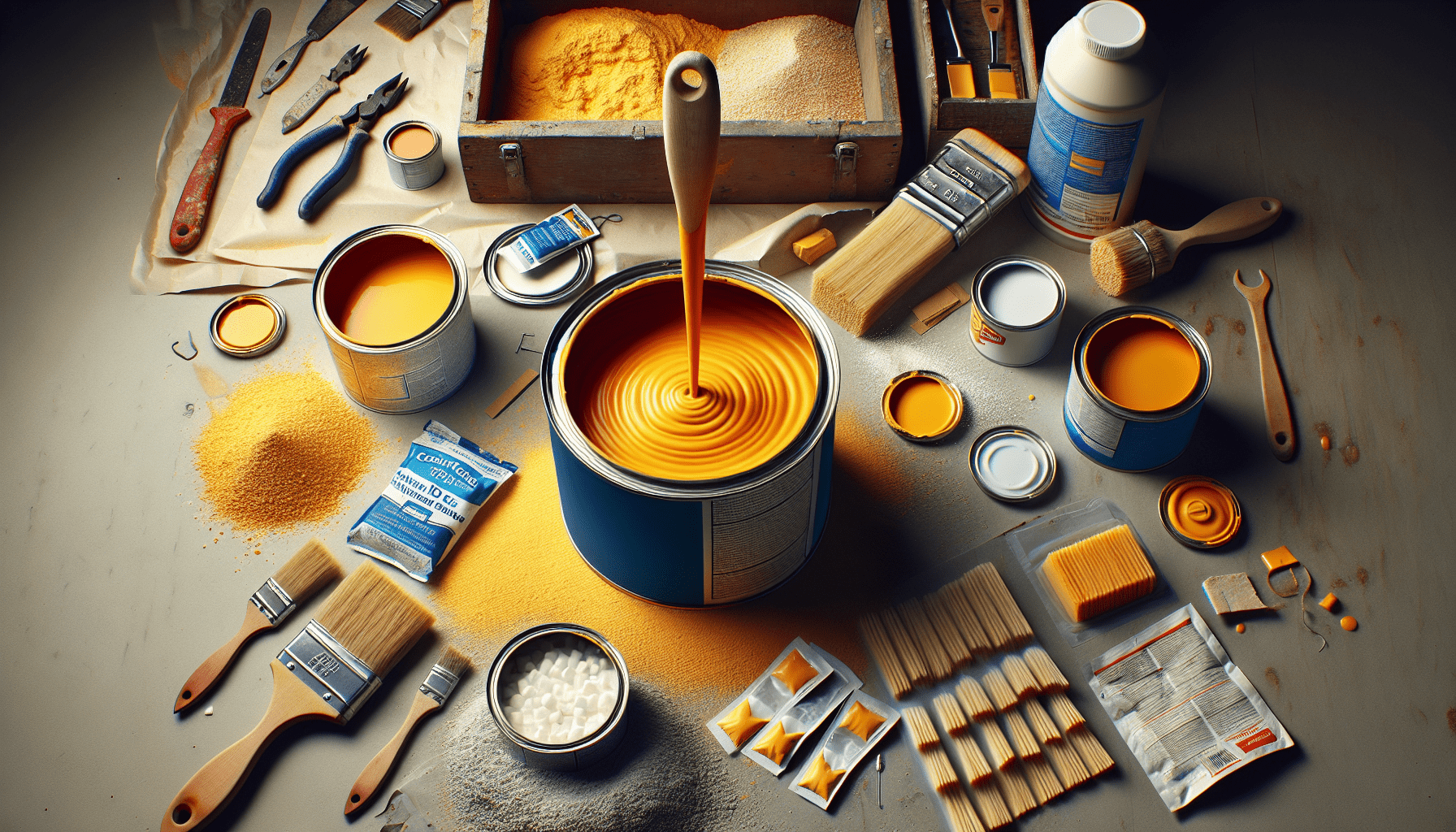In the realm of fine arts, understanding the components and intricacies of your materials can elevate your craft to an entirely new level. This article explores one such fundamental aspect: the vehicle of traditional oil paint. You’ll gain a deep insight into what constitutes the ‘vehicle’ in oil paint – the substance that binds pigments together, influences drying time and ultimately gives oil paint its unique, beloved characteristics. Get ready to enhance your comprehension of the medium that has been the heart of extraordinary artworks throughout history.

Introduction to Traditional Oil Paint
Before we delve into the intricacies of paint vehicles, it is crucial to establish an understanding of what traditional oil paint is.
Definition of traditional oil paint
Traditional oil paint is a type of slow-drying paint composed of pigment particles suspended in a drying oil, typically linseed oil. Having been around since the fifteenth century, this kind of paint offers great versatility, fostering a rich sense of texture and depth in artworks.
Brief history of traditional oil paint
Traditional oil paint dates back to the 7th century, but it only became prevalent in Europe by the 15th century. The Renaissance in particular saw great strides in the use of oil paint. Many masterpieces from history were made possible by this medium, with classic artists like Da Vinci, Rubens, and Van Gogh employing it to stunning effect.
Components of Traditional Oil Paint
A typical oil paint is composed of four major elements – pigments, binders, solvents, and driers.
Pigments
Pigments are fine, colored particles that provide the paint with its hue. These can originate from a variety of sources – mineral deposits, organic compounds, and sometimes even precious stones. They can be natural or synthetic, ground into a fine powder and used to create richly colored paint.
Binders
Binders, or mediums, are what hold the pigment in suspension and provide the paint with its texture or consistency. Traditionally, binders for oil paints have been oils like linseed oil, poppy seed oil, and others.
Solvents
Solvents, also known as thinners, dilute the paint and make it workable. They can alter the viscosity of the paint, allowing it to spread smoothly on the canvas. The most common solvents used in oil painting are turpentine and mineral spirits.
Driers
Driers, also known humorously as “siccative,” are additives that speed up the drying time of oil paint. They are generally metallic soaps that catalyze the binding oil’s oxidation.
Understanding the Vehicle in Traditional Oil Paint
We’ve discussed how traditional oil paint is more than just pigment; it’s a combination of various components that each contribute to the overall effect of the paint. One such critical component is the vehicle.
Definition of vehicle in traditional oil paint
In the context of oil paint, the vehicle refers mainly to the oil binder, which envelops and distributes the pigmented particles over the canvas. It is the medium that allows the paint to flow and imparts various behavioral characteristics to it.
Role and importance of vehicle in traditional oil paint
The vehicle in traditional oil paint is what determines its drying time, consistency, sheen, and texture. It also plays a crucial role in the stability of the paint. Different oils provide different benefits and have distinctive properties, making the choice of vehicle a significant one.
Types of Vehicles Used in Traditional Oil Paint
There are several types of oils used as vehicles in traditional oil paint, each with unique characteristics and uses.
Linseed oil
Often considered the classic medium for oil paint, linseed oil has been favored for centuries. It comes from the seeds of the flax plant and is cherished for its durability and flexibility.
Poppy seed oil
Poppy seed oil is a light, delicate oil, typically used for its non-yellowing properties. It’s ideal for light colors and for maintaining their vibrancy.
Safflower oil
Safflower oil has similar qualities to poppy seed oil – it’s light and doesn’t yellow as much as other oils. It’s often used interchangeably with poppy seed oil.
Walnut oil
Walnut oil is a clear, slow drying oil valued for its clarity. It’s also less prone to yellowing than linseed oil, making it ideal for lighter colors.
Stand oil
Stand oil is essentially linseed oil that has been thickened by heat treatment. The treatment reduces the oil’s tendency to yellow and gives it a smoother, more durable finish.

Properties and Characteristics of Each Vehicle
Each type of oil carries its unique set of properties and behaviors that can influence the characteristics of the paint.
Linseed oil: Drying time, color saturation, glossiness
Linseed oil offers a reasonable drying time, promoting good color saturation and a nicely glossy finish. It is, however, more prone to yellowing over time compared to other oils.
Poppy seed oil: Consistency, drying time, yellowing tendency
Poppy seed oil has a silky consistency and dries slower than linseed oil. It’s highly favored for its minimal yellowing tendency, making it ideal for maintaining the brightness of colors.
Safflower oil: Fluidity, yellowing tendency, drying time
Like poppy seed oil, safflower oil also offers good fluidity and less yellowing. It dries more slowly but tends to be more resistant to cracking.
Walnut oil: Clarity, slow drying time, texture
Walnut oil dries slowly, providing excellent clarity and a unique, creamy texture to paint. It is also less likely to yellow over time.
Stand oil: Viscosity, luster, film strength
Stand oil is known for its high viscosity, remarkable luster, and robust film strength. Although it takes longer to dry, it provides a smooth, durable finish and enhances flow and leveling.
Usage and Application of Each Vehicle
The application and usage of each type of oil can differ depending on its properties and the desired effect.
Linseed oil: Traditional, all-purpose
As the most traditional oil medium, linseed oil is often used in a general-purpose capacity. Its versatile nature makes it suitable for all stages of a painting.
Poppy seed oil: Early stages of painting, detail work
Poppy seed oil’s slow drying time and minimal yellowing make it ideal for the early stages of a painting or for detail work where clarity and freshness of color are desired.
Safflower oil: White and light-colored pigments, glazing techniques
Safflower oil is often used with white and light-colored pigments due to its non-yellowing property. Its excellent leveling characteristics also make it great for glazing techniques.
Walnut oil: Slow drying techniques, impasto effects
Walnut oil is favored for slow drying techniques and for achieving impasto effects. Its creamy texture is excellent for adding body to the paint and enhancing brushwork.
Stand oil: Varnishing, glazing, thick layers
Stand oil is best suited for varnishing, glazing, and creating thick layers. Its high viscosity and long drying time make it particularly well-suited for these purposes.
Advantages and Disadvantages of Each Vehicle
Choosing a vehicle for your oil paint involves considering the advantages and disadvantages of each type.
Linseed oil: Versatility, yellowing tendency
While linseed oil is applauded for its versatility and saturation, it does have a tendency to yellow over time, which might affect lighter colors.
Poppy seed oil: Quick drying time, restricted usage with certain pigments
Poppy seed oil excels in retaining the vibrancy of colors. However, its slow drying time necessitates careful planning, and it may not be ideal for use with certain earth pigments.
Safflower oil: Less yellowing, long drying time
Safflower oil has lower yellowing potential and is beneficial for white and light-colored paints. However, its longer drying time can be a disadvantage for artists who work quickly.
Walnut oil: Slow drying time can be inconvenient, unique texture
Walnut oil brings a unique texture to paints and has less tendency to yellow. However, its slow drying time can be inconvenient for artists who wish to work at a faster pace.
Stand oil: Excellent film strength, longer drying time
Stand oil, despite taking time to dry, forms a strong, durable coating with a beautiful luster. Its longer drying time is a downside if a quick-drying solution is required.
Other Considerations When Choosing a Vehicle
In addition to understanding the behavior and properties of different oil paints, it’s important to consider your personal working preferences and techniques, including drying time, working properties, yellowing, and compatibility.
Drying time expectations
You should think about the speed at which you want your paints to be drying. Some techniques require slow-drying paints, while others necessitate faster drying times.
Working properties preferences
Oils differ in their working qualities, including fluidity, consistency, and texture. Some artists prefer a rich, buttery paint, while others prefer a thin and smooth demeanor.
Yellowing and aging effects
If you’re using lots of whites or light colors, consider the yellowing effects of each oil. Some oils, like poppy seed and safflower, are less prone to yellowing and are ideal for maintaining the freshness of lighter tones.
Compatibility with pigments
Lastly, ensure the oils you’re using are compatible with your chosen pigments. Some pigments may react with certain oils, changing their properties and influencing their behavior.
Traditional Oil Paint Techniques and Vehicles
Not only does the choice of vehicle affect the properties and qualities of the paint, but it also plays a pivotal role in various traditional oil paint techniques.
Glazing
Glazing, which involves applying thin layers of transparent paint, often benefits from oils like linseed or safflower oil for their excellent leveling and slow drying properties.
Impasto
Impasto, where paint is laid thickly on the surface to create texture, can benefit from the use of thicker oils like walnut or stand oil, allowing for greater depth and dimension.
Layering
When layering, the types of oils used can dramatically affect the look and feel of the final piece. Oils that dry to a hard, durable finish like linseed or stand oil are beneficial in layering techniques.
Direct painting
In direct painting, where the artwork is completed in one sitting, or ‘alla prima,’ fast-drying oils like poppy seed oil can be beneficial due to their quicker drying times.
Conclusion
Summary of the importance of the vehicle in traditional oil paint
The role of the vehicle in traditional oil paint cannot be understated. It significantly influences the properties, behavior, and application of the paint, impacting the drying time, texture, luster, and even the stability of the paint.
Considerations for choosing the right vehicle
Choosing the right vehicle also requires careful consideration of your working techniques and preferences, the characteristics and limitations of each oil, and the specific requirements of your artwork.
In conclusion, understanding the role and implications of the vehicle in traditional oil paint is essential for any artist striving to master this medium. The knowledge of vehicles not only enables you to control your paint’s behavior but also enriches the process and outcome of your artwork.



